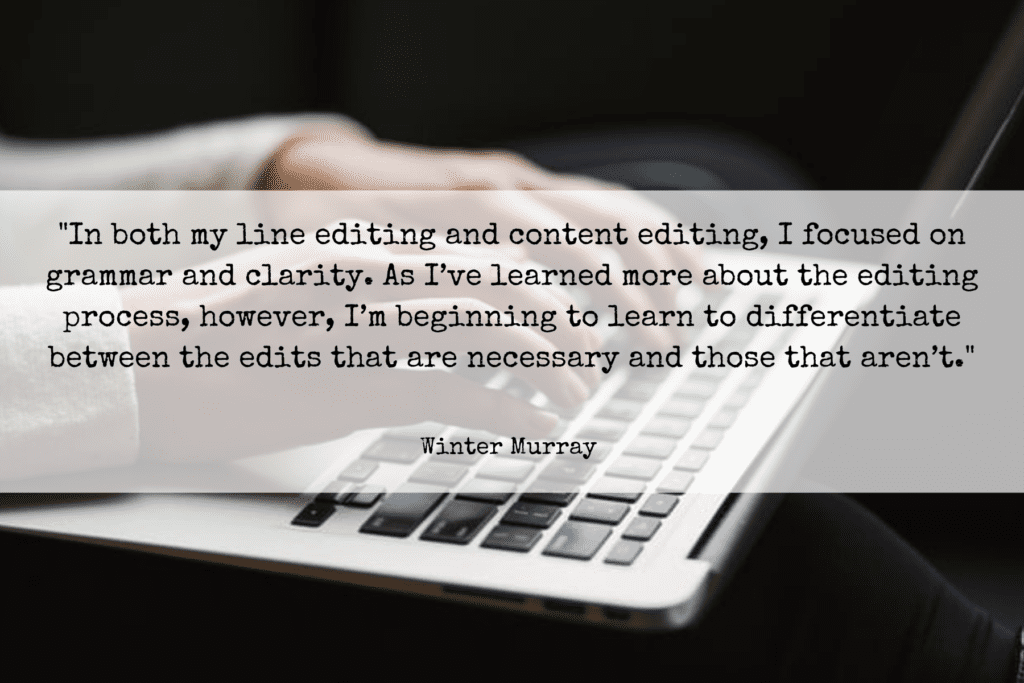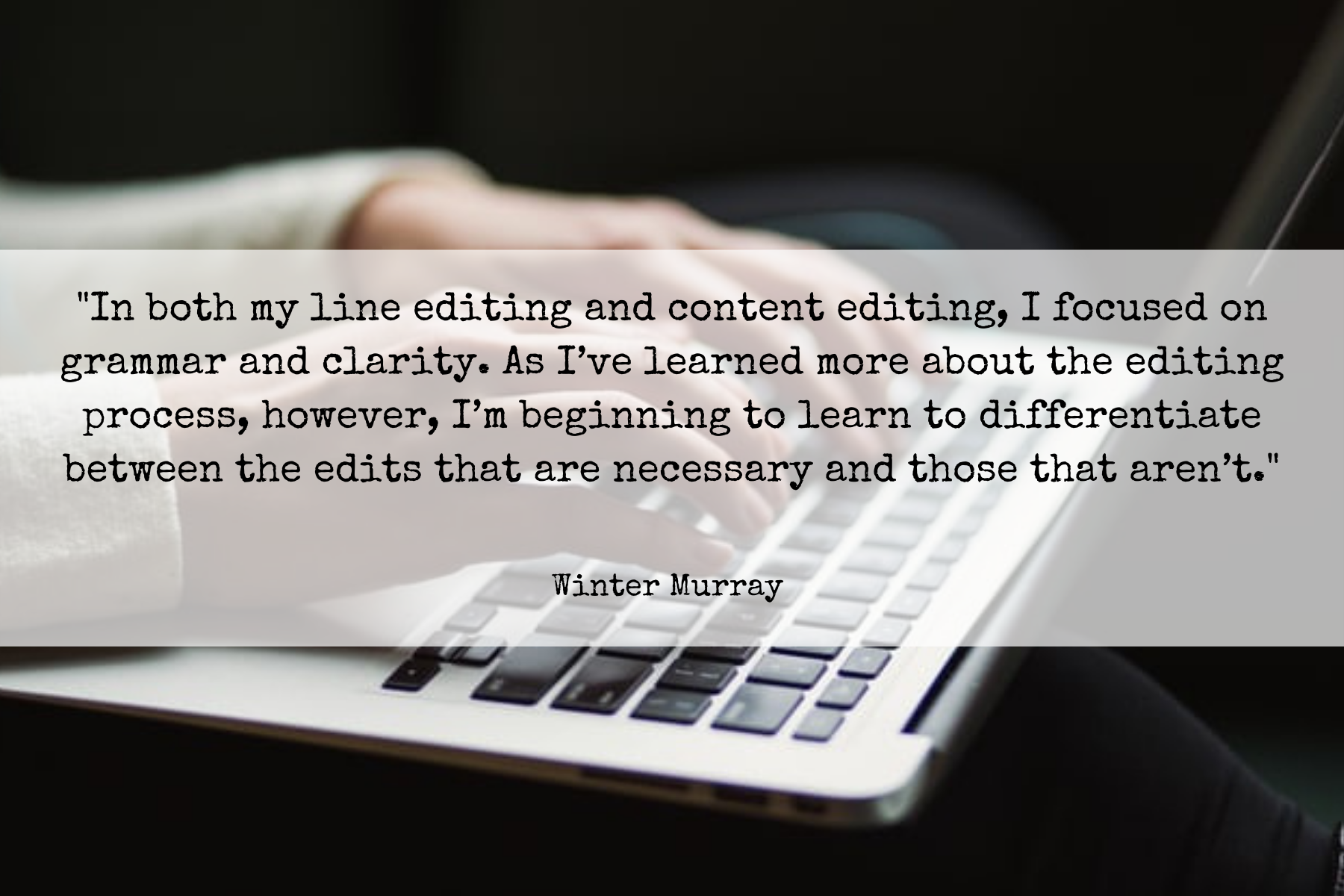by Winter Murray
Since starting as an intern at IOM in January of 2021, my understanding of how to approach editing manuscripts has undergone a lot of growth. In my job as a tutor at my university’s writing center, my editing experience has been limited to identifying patterns of errors and providing global feedback that the writer can apply throughout their papers. Although that skillset is useful in editing manuscripts, in my work at IOM, I’ve learned a lot about the editing process as a whole.
The first and most important thing I’ve learned about editing is that writers sometimes have a hard time seeing their own work clearly. This is a lesson I’ve applied in my own writing as a student, and it’s the reason I myself use my university writing center’s services to have a coworker read over all of my papers before I submit them. Oftentimes, just having a second set of eyes on your work can give you new insight into how a reader might perceive your writing. As the writer, you have a level of context and understanding of the material that your reader might not have, so it can be really helpful to have an objective editor read your writing to get a sense of what parts may be confusing. Of course, it can get confusing if you have many different people all giving you different feedback, so working with one or two trusted editors can go a long way towards providing clarity and a new perspective.
Keeping this lesson in mind, I’ve taken my roles as an intern editor and now an editorial assistant very seriously. Writing can be a very personal and intimate process, and writers often put a lot of themselves into their work. As such, another lesson I’ve learned, which I’m still working out how to apply in my editing work, is how to balance the author’s voice with what’s technically correct. Every writer has their quirks. These can be certain turns of phrases that they like to use or sentence structures that they apply. While these quirks may not technically be grammatically correct, they can be very characteristic of the author’s voice, so sometimes it’s better to leave them be.

At the beginning of my time with IOM, my editing was very oriented around what was technically correct. In both my line editing and content editing, I focused on grammar and clarity. As I’ve learned more about the editing process, however, I’m beginning to learn to differentiate between the edits that are necessary and those that aren’t. For me, learning these lessons has been an ongoing process, especially considering that each genre calls for a different style of editing. But regardless of genre, the core tenet of respecting the author’s voice should drive editorial work.


